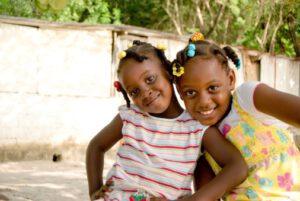Trinidad and Tobago
Adopting from Trinidad and Tobago
Trinidad and Tobago has updated its law on the adoption of children effective from May 2015 and has now made specific provision for intercountry adoption. The only body that is permitted to manage the local adoption process is the Children’s Authority of Trinidad and Tobago (“the Authority”), which has replaced the former Adoption Board. An Adoption Order may only be made by the Court, and the Court may not entertain an application, unless it is supported by a recommendation from the Authority. An Adoption Order signifies a full and final adoption under the laws of Trinidad and Tobago and is available to nationals and non-nationals, whether or not they are resident or domiciled in Trinidad and Tobago. An Adoption Order legally generates an adoption certificate which shows the child’s date of birth, new parentage, place of birth and new name and seals the child’s original birth certificate. There are two types of adoption procedures in Trinidad and Tobago: kinship and non-kinship. Both adoption pathways require prospective adoptive parents to initiate contact with the Authority prior to beginning the adoption process.
Kinship Adoptions
 Trinidad and Tobago considers kinship adoptions open adoptions because all parties involved already know one another. In such cases, the care and control of a child is legally transferred to a relative by blood or marriage. Informed consent of the birth parents is required for such cases to proceed.
Trinidad and Tobago considers kinship adoptions open adoptions because all parties involved already know one another. In such cases, the care and control of a child is legally transferred to a relative by blood or marriage. Informed consent of the birth parents is required for such cases to proceed.
Families wishing to adopt a child related to them will begin the process by submitting an Application to Adopt to the Authority and await the assignment of a caseworker which can take a couple of months. When a case worker has been assigned, the family is required to share with the Authority the name and contact information of the accredited Adoption Services Provider in the US that will be facilitating the case, namely Hopscotch Adoptions, Inc. From then on, communication will take place between the two agencies, rather than directly between the family and the Authority.
Families will then proceed to complete a home study in their state of residence, which includes a psychological evaluation by an approved provider, and assemble all additional documentation required by Trinidad and Tobago as instructed by Hopscotch. Furthermore, the family will seek I-600A approval from USCIS once the home study is finalized. The Adoption Committee at the Authority will review the family’s complete documentation and either approve or deny the case. If approved, families will travel to Trinidad and Tobago and retain the services of an attorney to represent them in court where the Adoption Order will be issued if the Court is satisfied that the adoption is in the best interest of the child. After the Adoption Order is granted, families may proceed with filing the I-600 petition to obtain a visa for their new child to enter the US. Hopscotch will assist in the coordination of the I-600 petition package.
Non-Kinship Adoptions
 Families seeking to adopt a child not related to them from Trinidad and Tobago will begin the process by submitting an Application to Adopt to the Authority and await the assignment of a caseworker which can take a couple of months. When a case worker has been assigned, the family is required to share with the Authority the name and contact information of the accredited Adoption Services Provider in the US that will be facilitating the case, namely Hopscotch Adoptions, Inc. From then on, communication will take place between the two agencies, rather than directly between the family and the Authority.
Families seeking to adopt a child not related to them from Trinidad and Tobago will begin the process by submitting an Application to Adopt to the Authority and await the assignment of a caseworker which can take a couple of months. When a case worker has been assigned, the family is required to share with the Authority the name and contact information of the accredited Adoption Services Provider in the US that will be facilitating the case, namely Hopscotch Adoptions, Inc. From then on, communication will take place between the two agencies, rather than directly between the family and the Authority.
Families will then proceed to complete a home study, which includes a psychological evaluation through an approved provider, in their state of residence and assemble all additional documentation required by Trinidad and Tobago as instructed by Hopscotch. Furthermore, the family will seek I-600A approval from USCIS once the home study is finalized. The Adoption Committee at the Authority will review the family’s complete documentation and either approve or deny the case. If approved, the family will enter a referral wait and will be contacted only if a suitable child meeting the family’s stated parameters has been identified and is being proposed to the family for adoption. Referral wait times are unpredictable and will, in part, depend on a family’s child criteria. Home studies are valid for only 12 months under the laws of Trinidad and Tobago and families must be prepared to update their paperwork should the process exceed that timeframe. Updating the home study, USCIS approval and dossier documentation incurs additional expense and time of the prospective adoptive parent(s).
 If a family has received a referral and wishes to proceed with the adoption, the family must move to Trinidad and Tobago for a period of at least one year. This period includes a minimum of ten weekly and supervised interaction sessions with the child and, if successfully concluded, a six-month probationary period during which the child lives with the family in Trinidad and Tobago. During the probationary period, families can expect scheduled and impromptu visits from child welfare professionals who are ready to support the child and family during this transition. After a successful probationary period, the Authority’s Adoption Committee will issue approval for the case to proceed to court.
If a family has received a referral and wishes to proceed with the adoption, the family must move to Trinidad and Tobago for a period of at least one year. This period includes a minimum of ten weekly and supervised interaction sessions with the child and, if successfully concluded, a six-month probationary period during which the child lives with the family in Trinidad and Tobago. During the probationary period, families can expect scheduled and impromptu visits from child welfare professionals who are ready to support the child and family during this transition. After a successful probationary period, the Authority’s Adoption Committee will issue approval for the case to proceed to court.
At this point, families retain the services of a local attorney to represent them in court where the Adoption Order will be issued if the court is satisfied that the adoption is in the best interest of the child. When the Adoption Order is granted, families may proceed with filing the I-600 to obtain a visa for their new child to enter the US. Hopscotch will assist in the coordination of the I-600 petition package.
The Children
Trinidad and Tobago, at any given time, does not have many children in need of permanency abroad. Eligible children are cleared for international adoption, including kinship, through the Authority. In non-relative adoptions, parents should not expect to be matched with a child under the age of 24 months as such placements would be very rare. Openness to older children, sibling groups, and any medical or developmental diagnoses may positively impact a family’s referral wait time although Hopscotch cannot predict how long the wait will take for any individual case.
 Trinidad and Tobago places a high priority on honesty and transparency during the adoption process and will provide families with a child’s comprehensive medical and social background, as available, as well as a family history and photos at the time of referral. The Authority is keenly aware that even children who may be physically healthy could present, now or in the future, with developmental challenges, mental health diagnoses, the effects of complex trauma, and other conditions.
Trinidad and Tobago places a high priority on honesty and transparency during the adoption process and will provide families with a child’s comprehensive medical and social background, as available, as well as a family history and photos at the time of referral. The Authority is keenly aware that even children who may be physically healthy could present, now or in the future, with developmental challenges, mental health diagnoses, the effects of complex trauma, and other conditions.
Informed consent from a child’s birth parents is necessary to clear a child for international adoption and the Authority takes great care in advising families of origin about the permanence of adoption and any matters associated with their decision to consent.
Prospective adoptive parents should be aware of health risks specific to Trinidad and Tobago, which include but are not limited to diabetes, ischemic heart disease, stroke, and chronic kidney disease.
Eligible Applicants
Single men and women as well as heterosexual married couples may apply for an adoption from Trinidad and Tobago. The country does not have age or income requirements at this time, but applicants must still meet the requirements of their state of residence and the US federal government as well as satisfy the Authority and the Court in Trinidad and Tobago as to their suitability. Applicants will be assessed case by case and must undergo a psychological evaluation as well as a clinical interview through an approved provider.
Post-Adoption
 The legislation of Trinidad and Tobago does not require post-adoption reporting unless the court specifically requests it in individual cases. However, adoptive families must still comply with any post-adoption reporting required by their US state of residence and Hopscotch, in the best interest of the child.
The legislation of Trinidad and Tobago does not require post-adoption reporting unless the court specifically requests it in individual cases. However, adoptive families must still comply with any post-adoption reporting required by their US state of residence and Hopscotch, in the best interest of the child.
The Country
These lush islands lay claim to being the economic powerhouse of the Caribbean. Vast oil and gas reserves have led to a high standard of living, and tourism is not the mainstay of the economy. Indeed, the word tourist is seldom used here; the preference is for the much friendlier (and perhaps vaguer) visitor.
Trinidad and Tobago’s Northern Range is thought to be part of the Andes in South America (it was connected to the mainland as recently as the last Ice Age). This geological history helps explain why the range of flora and fauna is much greater than on other Caribbean islands.
The two islands have very different histories, although both islands’ Amerindian populations were virtually wiped out by the arrival of Europeans. After Columbus landed in Trinidad in 1498, the island came under Spanish rule. In an attempt to build the population and provide greater numbers to fend off a potential British conquest, the government at the time encouraged French Catholics from nearby islands to settle in Trinidad and Tobago. This migration can be seen in the large number of French placenames scattered around the island. Despite this effort, the British conquered the island in 1797.
Tobago had a much more turbulent history. Named after the tobacco that was used by the native Amerindian population, the island changed hands more than a dozen times before eventually coming under British rule in 1814.
The two islands were merged into one crown colony in 1888, with Tobago being made a ward of Trinidad. Independence was achieved in 1962 under the leadership of Dr. Eric Williams, who became the first prime minister. The islands became an independent republic in 1976, with a bicameral parliament and an appointed president.
Trinidad and Tobago’s capital city, Port of Spain, is home to some 300,000 of the island’s 1.3 million inhabitants. Downtown Port of Spain is a bustling commercial center complete with high-rise office buildings and seemingly perpetual traffic. Happily, the northern mountain range rises just behind the city and helps to take much of the edge off the urban clamor.
The majority of Trinidad and Tobago’s population is of either of African or East Indian background—the descendants of African slaves and indentured East Indian laborers, who came to work the plantations in the 19th century. The island is always buzzing with a variety of celebrations and arts performances that might include African drumming and classical Indian dance. Although these two groups compose more than 80% of the population, other groups such as the French, Spanish, Chinese, and even Lebanese have left their mark.
Many of the art forms that are considered synonymous with the Caribbean were created on this relatively small island. Calypso was born there, as were soca, limbo, and the steel pan (steel drum). The island can also claim two winners of the Nobel Prize in Literature—V.S. Naipaul (2001), who was born in Trinidad and Tobago and wrote several of his earlier books about the island, and Derek Walcott (1992), a St. Lucian who moved to Trinidad in 1953. Many tourists make a pilgrimage simply to trace the places mentioned in Naipaul’s most famous novel, A House for Mr. Biswas (1961), which was partially based on his father’s life.
Physically, the islands offers an exact parallel to the rain forests of South America, which allows for interesting—and sometimes challenging — adventures. Beach lovers accustomed to the electric blue water and dazzling white sand of coral islands may be disappointed by the beaches on Trinidad and Tobago. The best beaches are on the north coast, with peach sand, clean blue-green water, and the forest-covered Northern Range as a backdrop. Beaches are almost completely free of hotel development.
The island of Tobago is 23 miles (37 km) northeast of Trinidad. The population here is much less ethnically diverse than that of the island of Trinidad, with the majority being of African descent. Tobagonians have their own unique dialect and distinct culture. Tourism is much more a part of the island’s economy, and you can find excellent resorts and facilities—along with pretty white-sand beaches.
Credit Fodor’s
Fees
Contact Hopscotch Adoptions directly to request a fee schedule.
Country Post Adoption or Post Placement Requirements
Post Adoption Report (PDF)
Department of State’s Case Data Verification Form
Upon request, Hopscotch discloses the following information for the most recent three calendar years to all prospective adoptive clients:
- The number of parents who apply to adopt through Hopscotch Adoptions’ program annually.
- The number of adoptive placements Hopscotch Adoption has made annually.
- The number and percentage of those placements that have disrupted or dissolved.
- The number of children eligible for adoption and awaiting referral from any Hague compliant country from which Hopscotch Adoptions assists in child placement, when known.
To request this information, please contact our office and we will respond to you within 7 business days.
Recommended Reading
Letters from London: Seven Essays by CLR James, edited by Nicholas Laughlin
A Naturalist’s Year by Richard French
Measures of Expatriation by VahniCapildeo
The Whale House by Sharon Millar
The Wine of Astonishment by Earl Lovelace
History of the People of Trinidad and Tobago by Eric Williams
De Rightest Place by Barbara Jenkins
Reading for Children
Trinidad and Tobago (Cultures of the World) Library
Kamal Goes to Trinidad (Children Return to their Roots)